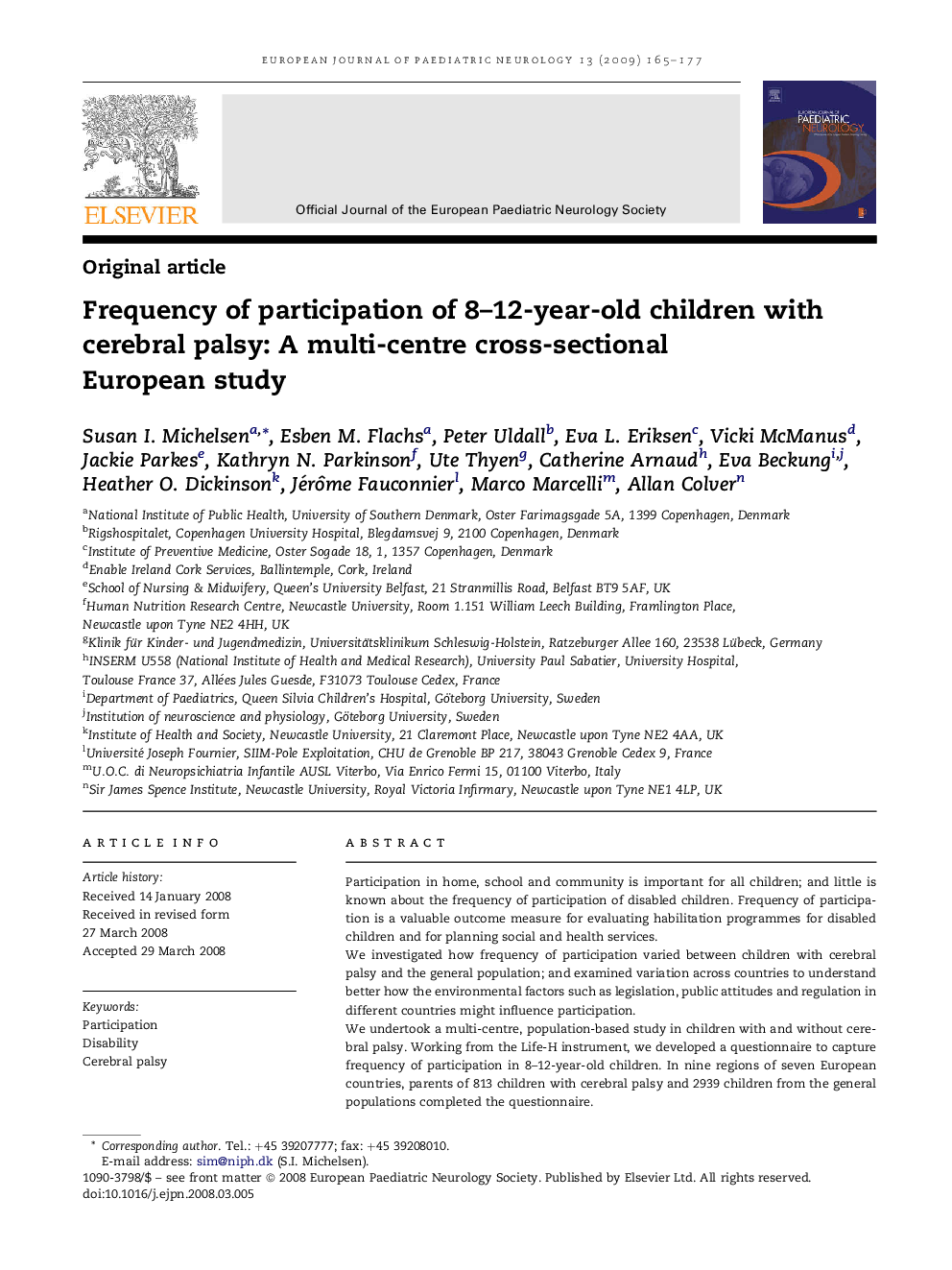| Article ID | Journal | Published Year | Pages | File Type |
|---|---|---|---|---|
| 3054625 | European Journal of Paediatric Neurology | 2009 | 13 Pages |
Participation in home, school and community is important for all children; and little is known about the frequency of participation of disabled children. Frequency of participation is a valuable outcome measure for evaluating habilitation programmes for disabled children and for planning social and health services.We investigated how frequency of participation varied between children with cerebral palsy and the general population; and examined variation across countries to understand better how the environmental factors such as legislation, public attitudes and regulation in different countries might influence participation.We undertook a multi-centre, population-based study in children with and without cerebral palsy. Working from the Life-H instrument, we developed a questionnaire to capture frequency of participation in 8–12-year-old children. In nine regions of seven European countries, parents of 813 children with cerebral palsy and 2939 children from the general populations completed the questionnaire.Frequency of participation for each question was dichotomised about the median; multivariable logistic regressions were carried out.In the general population, frequency of participation varied between countries. Children with cerebral palsy participated less frequently in many but not all areas of everyday life, compared with children from the general population. There was regional variation in the domains with reduced participation and in the magnitude of the differences. We discuss how this regional variation might be explained by the different environments in which children live. Attending a special school or class was not associated with further reduction in participation in most areas of everyday life.
